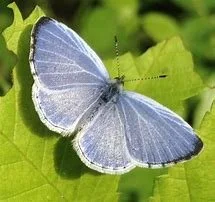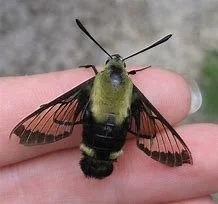Beautyberry
Written by Carmin Nezat
American Beauty Berry, Callicarpa americana!
Other common names are Spanish Mulberry, French Mulberry, Bermuda Mulberry, Sourberry, Sowberry. The genus name “Callicarpa” means beautiful fruit, hence the name beautyberry. Native to the Southeastern US, with a range extending into the Caribbean and northern Mexico.
In Cajun country it is called Chassepareille and the traditional Cajun application is as a gargle of the roots for ”bad gums.” The Alabama used a decoction of root and branch for a sweatbath for malarial fever and rheumatism. The Choctaw used a decoction of roots and berries taken for colic, dysentary and “attacks of dizziness.” The Koasati (Coushatta) used a decoction of the roots for stomach aches. The Seminole used the roots and or bark for “snake sickness” which was itchy skin, and a decoction of root bark taken for urine retention. The Muscogee* words for beautyberry are “kala:ci:ra:pi” and “ca:tapholo:ta.”
Today, it’s most popular medicinal effect is as a bug repellent. People would crush the leaves and rub them on their skin or under their horses’ harnesses to keep biting bugs at bay. The USDA's Agriculture Research Service has investigated the insect repellent properties of the plant and pinpointed four chemicals in isolation that repel: borneol, callicarpenal, intermedeol, and spathulenol. The USDA has patented callicarpenal for use as a mosquito repellent. Research shows that callicarpenal is effective against fire ants and certain tick species in addition to mosquitoes.
The berries ripen in September through October and are a favorite among wild bird species including cardinals, mockingbirds, finches, woodpeckers and more. This plant is a host for the caterpillars of several butterflies and moths including the spring azure butterfly and the snowberry clearwing moth. The summer flowers attract bees and butterflies. It’s a great shrub to plant in the shade for pollinators.
A 2019 clinical study highlights the potential of C. americana leaf extracts as a cosmeceutical ingredient for the management of acne vulgaris. The conclusion was that there is a very promising potential for Callicarpa americana to inhibit the growth of C. acnes bacteria, but future studies should pursue isolation and structural determination of active components, further examination of the efficacy and safety of the compounds, and examine the mechanism of action for these observed antibacterial effects.
The fruits are edible and have a spice flavor rather than a sweetness. They are used often for jellies, jellos, tea, sauces, syrup/cordials, wine, sorbet, etc. There’s no available data on beautyberry nutrition, however, based on the berries’ flavor and color is that beautyberries have very high Vitamin C levels (tang), contain high concentrations of other vitamins and minerals, have high levels of carbohydrates, like other berries (sweet), have very high fiber content (if eaten raw with seeds and skin), contain high levels of beneficial antioxidant compounds, which give them their purple color.
*Muscogee, previously referred to by its exonym, Creek, is historically the language spoken by various constituent groups of the Muscogee or Maskoki in what are now Alabama and Georgia. When spoken by Seminole people, it is known as Seminole.
1 Healers-Garden-Brochure-Web.pdf (netdna-ssl.com) French mulberry.
2 Swanton, John R, 1928, Religious Beliefs and Medical Practices of the Creek Indians, SI-BAE Annual
Report #42:473-672, page 663. Taylor, Linda Averill, 1940, Plants Used As Curatives by Certain
Southeastern Tribes, Cambridge, MA. Botanical Museum of Harvard University, page 52. BRIT - Native
American Ethnobotany Database Callicarpa americana.
3 Bushnell, Jr., David I., 1909, The Choctaw of Bayou Lacomb, St. Tammany Parish, Louisiana, SI-BAE
Bulletin #48, page 24. BRIT - Native American Ethnobotany Database Callicarpa americana.
4 Taylor, Linda Averill, 1940, Plants Used As Curatives by Certain Southeastern Tribes, Cambridge, MA.
Botanical Museum of Harvard University, page 52. BRIT - Native American Ethnobotany Database
Callicarpa americana.
5 Taylor, Linda Averill, 1940, Plants Used As Curatives by Certain Southeastern Tribes, Cambridge, MA.
Botanical Museum of Harvard University, page 52. BRIT - Native American Ethnobotany Database
Callicarpa americana.
6 Sturtevant, William, 1954, The Mikasuki Seminole: Medical Beliefs and Practices, Yale University, PhD
Thesis, page 166. Sturtevant, William, 1954, The Mikasuki Seminole: Medical Beliefs and Practices, Yale
University, PhD Thesis, page 239. BRIT - Native American Ethnobotany Database Callicarpa americana.
7 Sturtevant, William, 1954, The Mikasuki Seminole: Medical Beliefs and Practices, Yale University, PhD
Thesis, page 274. BRIT - Native American Ethnobotany Database Callicarpa americana.
8 Beautyberry - Callicarpa americana (greenfolkherbs.com) Cantrell, C. L.; Klun, J. A.; Bryson, C. T.;
Kobaisy, M.; Duke, S. O. (2005). "Isolation and Identification of Mosquito Bite Deterrent Terpenoids from
Leaves of American
9 Growth Inhibitory Activity of Callicarpa americana Leaf Extracts Against Cutibacterium acnes - PMC
(nih.gov)
10 How to use American beautyberries as food and mosquito repellent - Tyrant Farms
11. Martin, Corinne. Louisiana Herb Journal. 2022. Baton Rouge, Louisiana State University Press.
Beautyberry and the Boardwalk, p 15-18.
12. Hutton, Kimberly, "A Comparative Study of the Plants Used for Medicinal Purposes by the Creek and
Seminoles Tribes" (2010). USF Tampa Graduate Theses and Dissertations. https://digitalcommons.usf.edu/etd/1665
P. 81




